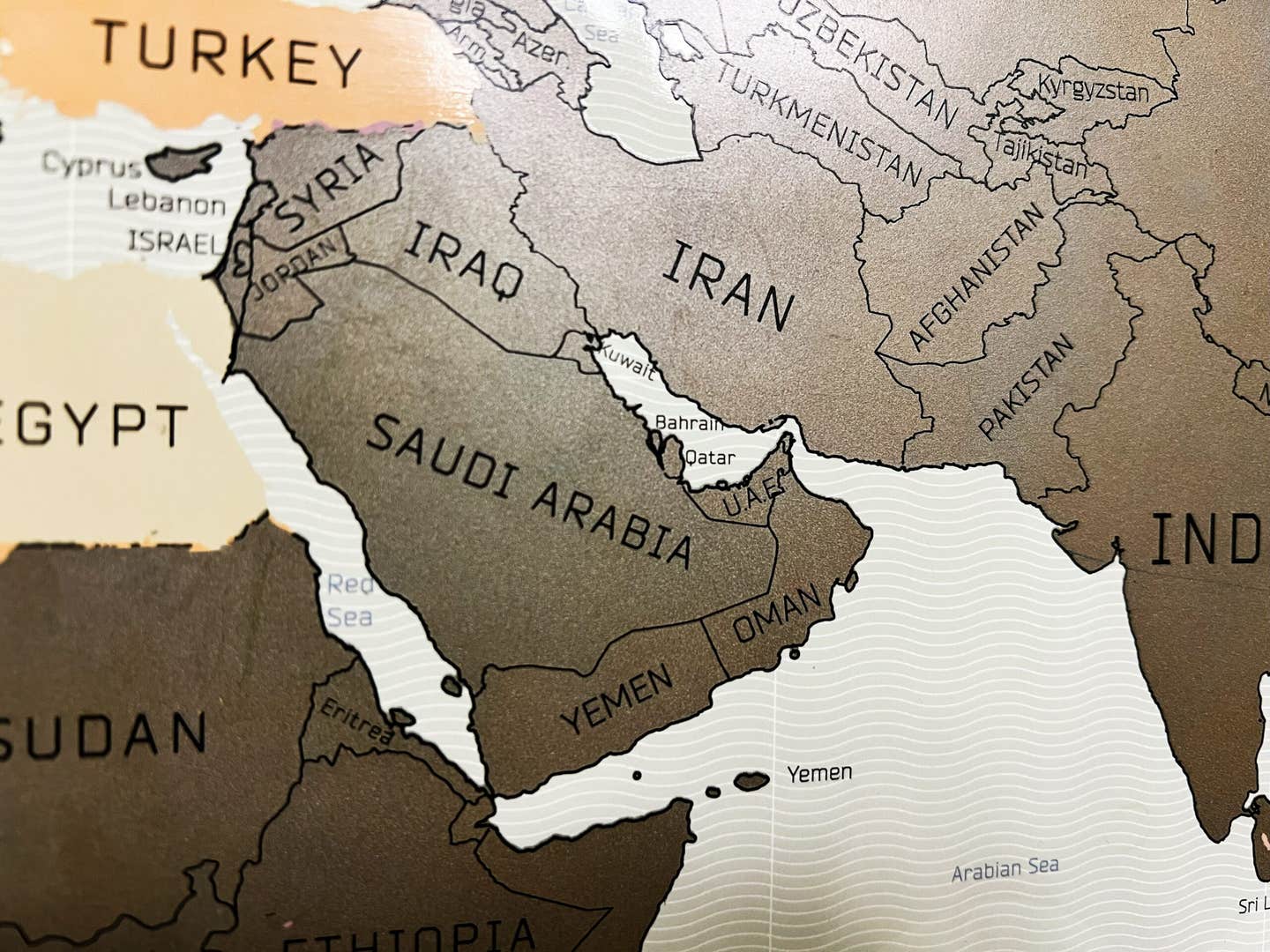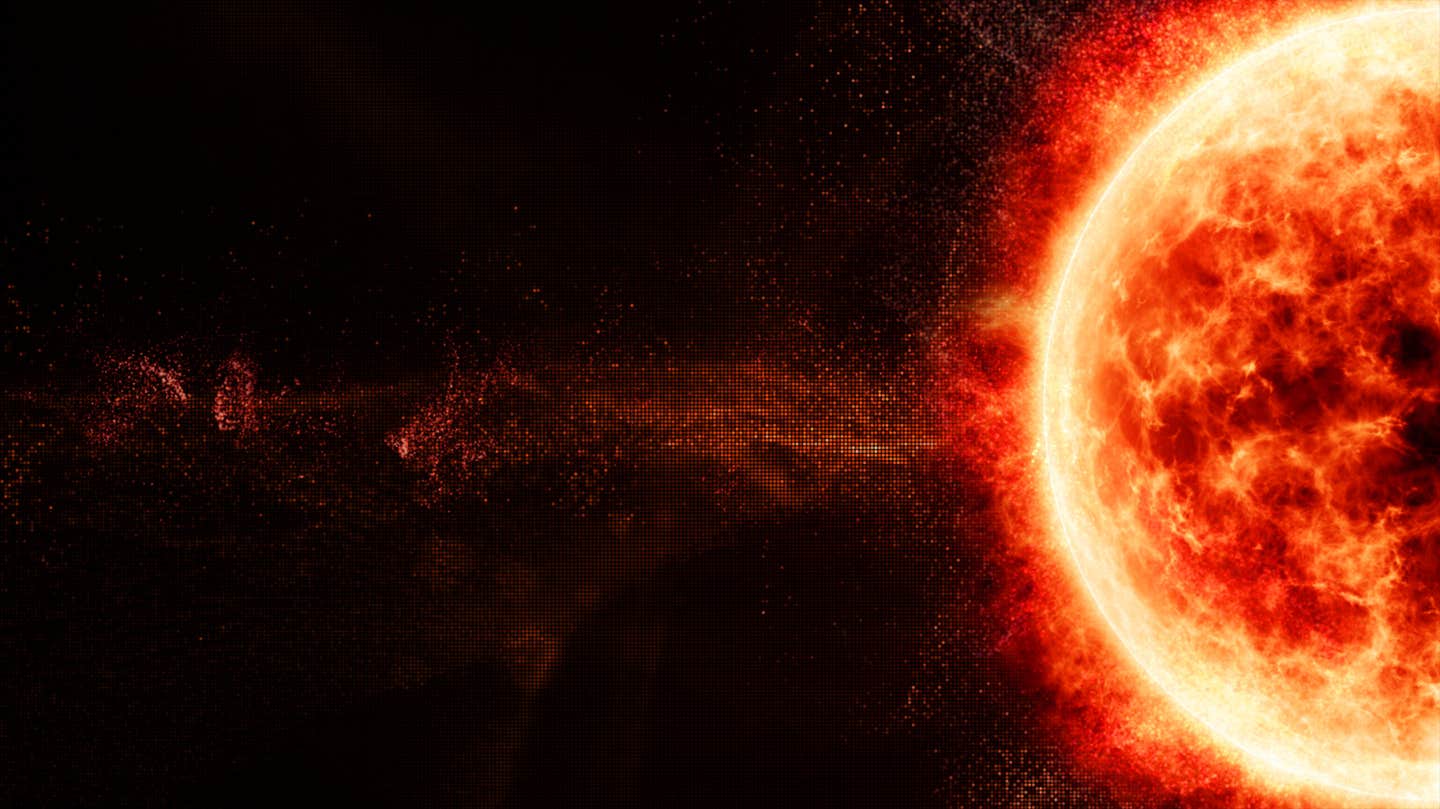The Red Sea was completely dry before a massive Indian Ocean flood revived it
Scientists reveal the Red Sea dried out 6.2 million years ago before a catastrophic flood from the Indian Ocean revived it.

About 6.2 million years ago, the Red Sea dried into a barren salt desert before a catastrophic Indian Ocean flood carved a canyon and restored its waters. (CREDIT: Shutterstock)
Some 6.2 million years ago, the Red Sea basin was not recognizable as the deep blue waters of the ocean it is now. Instead, it was a desolate wasteland, cut off from Earth's oceans, and inundated by tremendous thicknesses of salt. And then, in one of the planet's most severe environmental shifts, a catastrophic flood from the Indian Ocean ripped through volcanic dams, formed an epic canyon, and engulfed the basin in a geologic wink of an eye.
Researchers combined seismic images, chemical dating, and fossils to prove that the floor of the Red Sea dried out to the very bottom before it was drowned again by a spate of angry seawater.
Their study connects this episode to the Messinian Salinity Crisis of the Mediterranean, a time when major seas in the region evaporated, leaving vast salt deposits and changing the world's ocean circulation.
A World of Salt and Silence
The Red Sea came into existence about 30 million years ago when the Arabian Plate broke off Africa, creating a narrow fissure that slowly grew into a gulf. About 23 million years ago, it opened up into the Mediterranean, allowing the seas to become teeming with life. Fossil reefs found along the present Saudi Arabian coastline still bear witness to the early outburst of diversity.
But life did not continue. As the sea grew more enclosed, evaporation increased and water circulation slowed. By 15 million years ago, salinity had risen so suddenly that almost all sea creatures had died out. Over millions of years, huge deposits of halite (rock salt) and anhydrite (a gypsum mineral) formed, filling a basin with monsters of salt in place of fish and corals.
The last nail was the loss of contact with the Mediterranean, which occurred some 6.2 million years ago. The Red Sea was a salt desert, its bed exposed to weathering by wind, rain, and streams.
How Scientists Rebuilt the Story
In order to rebuild this lost page, the King Abdullah University of Science and Technology (KAUST) scientists had to rely on three primary sources of evidence.
Seismic imaging initially gave them a way of "seeing" beneath the surface. They subsequently employed high-resolution surveys which lit up a uniform surface, termed the S-reflector, onto which older layers of salt had been truncated and covered by fresh sediment. The orientation and flatness of this surface and its truncation of tilted evaporite layers suggested that vast portions of the basin had been scoured out.
Second, drill cores provided physical samples. For one well, researchers found thick anhydrite beneath the boundary but fossil-laden limestone right on top of it. These fossils—small foraminifera, red algae fragments, and worm tubes—testified to shallow marine water after the basin had gone through exposure to air.
Third, the researchers compared strontium isotopes in the limestones. Because the ratio of isotopes in seawater changes in a predictable manner with time, that allowed them to identify when conditions in the oceans were reinstated. Both wells showed a dramatic shift around 6.2 million years ago.
The story that emerges is simple: the basin evaporated, its salt beds were eroded away, and then, in less than 100,000 years, abruptly filled with an Indian Ocean flood.
A Flood That Cut a Canyon
Remnants of this cataclysmic refilling can be seen today. Bathymetric charts outline a 320-kilometer-long submarine canyon trending from the Gulf of Aden into the Red Sea. Up to eight kilometers wide in places, the canyon incises through volcanic ridges near the Bab el-Mandab Strait, the strait that serves as a thin gateway between Africa and Arabia.
Scientists believe that once the volcanic sill was breached, seawater flowed through the canyon with immense pressure of the waters. The flood inundated the salt flats, deepened the channel, and filled the basin with open-marine waters that were biologically diverse. Fossils within the sediments that deposited after the event confirm a return to normal salinity and thriving ecosystems.
"Here is one of the most disastrous environmental events in the world," said Dr. Tihana Pensa, lead author on the study. "It dried up totally and was then suddenly flooded about 6.2 million years ago."
Strikingly, it happened near a million years before the Mediterranean's own restoration in the famous Zanclean flood. The recrudescence of the Red Sea was unique, rejuvenating it as a sea basin long before the rest of the region recovered.
Why It Matters Today
The conclusions of the study do more than finally end a century-old argument regarding whether the Red Sea ever dried completely. They also illustrate the impact of catastrophic events on the surface of Earth. Within less than 100,000 years—a geological blink of an eye—the basin transformed from a salt desert to a highly successful sea.
The Red Sea is today home to the richest coral reefs on Earth and serves as a living laboratory for scientists. Its past reveals the manner in which oceans can disappear and reappear, depending on the interaction of tectonics, climate, and sea-level change.
This work contributes to our understanding of the processes that create and build up oceans on our planet," stated Professor Abdulkader Al Afifi of KAUST and co-author of the research. "It also continues to put KAUST at the forefront of Red Sea research.
The research also links the fate of the Red Sea to the Mediterranean's Messinian Salinity Crisis. That the two seas experienced massive desiccation at the same time shows that these events were interrelated, one of a chain of oceanographic transformations with worldwide relevance.
Practical Implications of the Research
Study of how seas vanish and re-emerge educates scientists on how modern oceans will act towards future climatic and tectonic influences. The history of the Red Sea teaches us that once thresholds are overcome, conditions can reverse very quickly and drastically.
The study also gives clues for energy exploration, as evaporite strata play a significant role in oil and gas entrapment. Apart from geology, the story also depicts nature's resilience—how a marine environment can recover after almost complete ruin and flourish once more.
For human beings today, it serves as a reminder that Earth's systems will drastically shift at times but can also heal and restore themselves over time.
Research findings are available online in the journal Communications Earth & Environment.
Related Stories
- Earth's largest flood refilled the Mediterranean Sea five million years ago
- Hidden 'Death Pool' in Red Sea could unlock secrets of alien life
- First-ever 'grumpy' fish species discovered in the Red Sea
Like these kind of feel good stories? Get The Brighter Side of News' newsletter.
Mac Oliveau
Science & Technology Writer
Mac Oliveau is a Los Angeles–based science and technology journalist for The Brighter Side of News, an online publication focused on uplifting, transformative stories from around the globe. Passionate about spotlighting groundbreaking discoveries and innovations, Mac covers a broad spectrum of topics—from medical breakthroughs and artificial intelligence to green tech and archeology. With a talent for making complex science clear and compelling, they connect readers to the advancements shaping a brighter, more hopeful future.



